Flag Differences
The difference in Confederate flags. Perhaps more than anything else, recent debates about “the Confederate flag” demonstrate that the public completely misunderstands historic Confederate flags and how they were used. (Pictures of the flags need a little editing due to background colors.)
The first flag widely associated with the Confederacy, the Bonnie Blue flag, was never a national flag at all, but was flown in support of secession, particularly in Louisiana and Texas. One large white star on a field of blue, the flag was designed to symbolize secession as one state star being plucked from the blue field of the U.S. flag.
The Bonnie Blue Flag
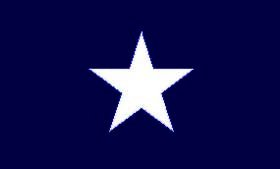
The first Confederate national flag, unrecognized by most Southerners today, is correctly known as the Stars and Bars. Adopted by the Provisional Congress in March 1861, the flag was designed to reflect the U.S. flag.
The 1st Confederate National Flag
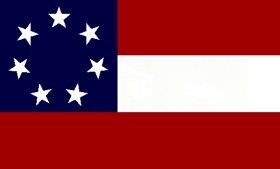
Instead of 13 stripes, the Stars and Bars incorporated two red and one white bar, along with a blue field containing one star for each Confederate state. Smith’s design refutes the notion that the Confederacy left the United States with malice, because the Confederate first national flag and national constitution both were patterned on those of the United States.
Unfortunately, the Stars and Bars created great confusion on the battlefield, because among the smoke and chaos, it looked like the Stars and Stripes. For that reason, Confederate Gen. Joseph Johnston ordered that a new flag be designed for use by troops on the battlefield; the result was the Confederate battle flag.
Incorrectly called the Stars and Bars by many, the square Confederate battle flag incorporated the Cross of St. Andrew, a Celtic Christian symbol, along with the stars and colors used in the national flag. Despite what some contemporary critics believe, the battle flag never served as a national flag of the Confederacy. Instead, the banner demonstrated the influence of Christianity among the troops and served as a rallying point for Confederate soldiers on the field of battle.
Confederate Battle Flag
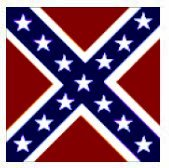
A rectangular form of the battle flag, commonly flown today, actually was adopted in 1863 as the Naval Jack, to be flown only on war ships, though the oblong version also was used by some Confederate army units fighting in western states.
Confederate Naval Jack
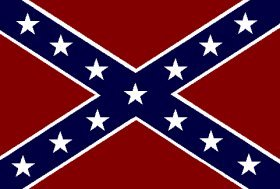
Because the Confederate battle flag became popular, the Confederate Congress adopted a second national flag in 1863. The Stainless Banner, a white flag with the square Confederate battle flag design in the upper left quadrant, flew over governmental buildings until the war took a turn for the worst.
Second Confederate National Flag

As the war came to a close in the spring of 1865, The Stainless Banner created yet another flag problem for the Confederacy: without wind, the limp national flag appeared to be a white flag of surrender. To solve this problem, the Confederate Congress added a red vertical bar to the end of the national flag, creating the third national flag for a country that existed only four years. Adopted just a month before the surrender at Appomattox Court House, Va., the third national flag never received widespread distribution.
Title: Third Confederate National Flag
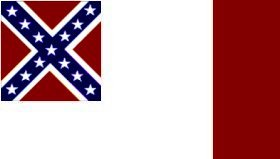
Unfortunately, debates over “the Confederate flag” have been filled with false assumptions and misinformation. The Stars and Bars, for example, is not the flag that flew over the South Carolina statehouse; that flag was The Naval Jack. Nor did the Confederate battle flag ever “fly over slavery,” since its use was confined to the battlefield.
